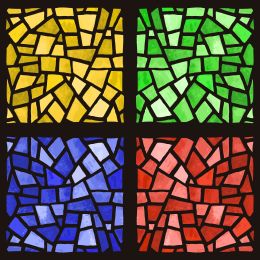Basic Multiplication Games for 3rd Grade
5 gamesUsing this series of basic educational games, your students will enhance their math skills by learning to interpret the products of whole numbers.
The Basic Multiplication learning objective — based on CCSS and state standards — delivers improved student engagement and academic performance in your classroom, as demonstrated by research.
This learning objective directly references 3.OA.A.1 as written in the common core national math standards.
Scroll down for a preview of this learning objective’s games and concepts.
Concepts Covered in Our Multiplication Games
Repeated Addition & Multiplication
- Repeated addition serves as an entry point to understanding multiplication.
- Multiplication is a more efficient way to represent repeated addition.
- This standard focuses on conceptual understanding, not the operation itself.
Key Concepts
- Word & Symbol Connection: Link the word times to the symbol (×).
- Equal Grouping:
- Split quantities into equal groups (whole number quotients only).
- No remainder should be left after grouping.
Building Multiplication Understanding with Games
- Repeated Addition & Multiplication Connection:
- Example: 2 + 2 + 2 + 2 + 2 = 10 is the same as 5 twos = 10.
- Which is also written as 5 × 2 = 10.
- Equal Groups Rule:
- Multiplication requires equal groups.
- Unequal groups cannot be multiplied.
Interpreting Models with Multiplication Games
- Recognize equal groups, arrays, and other models as representations of multiplication.
- Interpret models as multiplicative expressions or sentences
Repeated addition serves as an introduction to the standard, emphasizing the understanding of multiplication as a more efficient form of repeated addition. This standard focuses on conceptual understanding rather than the operation of multiplication itself, which would cover multiplication facts and tables.
The connection between the word times and the multiplication symbol (×) should be established. Quantities should be divided into equal groups, ensuring whole number quotients with no remainder.
Understanding multiplication begins with recognizing that repeated addition, such as 2 + 2 + 2 + 2 + 2 = 10, is equivalent to expressing it as “5 groups of 2” = 10. This concept further translates to the mathematical expression 5 × 2 = 10. Multiplication requires equal groups; unequal groups cannot be multiplied.
Equal groups, arrays, and other visual models should be interpreted as representations of multiplicative sentences and expressions. Recognizing these patterns helps build a strong foundation for understanding and learning multiplication as a structured process.
Below is a preview of each game designed to support this learning objective.
Access all of the games on Legends of Learning for free with a teacher account.






